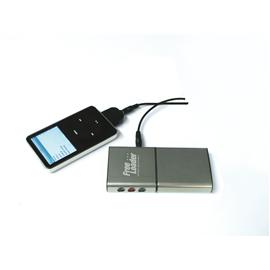Bernie Goldbach wrote a comment:
And accepting the iPhone’s poor battery performance by suggesting a clever work-around is fine, as long as you also accept its leading role as the phone with one of the largest carbon footprints.
My reply:
Phones don’t have carbon footprints. People do. When I’m using my iPhone I’m not using my MacBook Pro which has an 85W Power Supply.
It may seem crazy but this is an example of doing more with less. When I’m doing stuff on my iPhone (playing a game, tweeting, sending email, browsing the web), I’m not powering my MacBook Pro with it’s 17″ screen, dual core processors and kick ass graphics card – any one of which is likely to exceed the entire power drain of the iPhone.
My MacBook Pro has a 68-Watt-Hour battery holds 244800 (68 x 60 x 60) watt-seconds which equals 244800 joules. It drains in just under 4 hours of normal usage.
iPhone has a 1400 mAhour 3.7V battery. This means 1.4 Ampere-hours at 3.7 V. If the voltage remains constant (which is the real trick), this converts proportionally to Watt Hours so 3.7 V x 1.4 ampere-hours = 5.18 Watt Hours. Which means it holds 18648 joules. It drains in around 5 hours of normal usage (meaning constant usage. Standby is much better)
Can someone who knows a bit more about power check my figures? Being conservative with my power is important to me. (Point being that I recharge my iPhone using solar collectors – difficult enough in Northern Ireland)
Having a ready source of energy is important to someone who finds himself more often than not out of the office.


